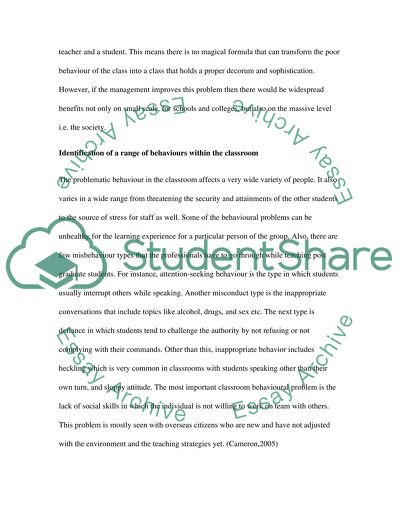Cite this document
(“Managing Behaviour in the Classroom Essay Example | Topics and Well Written Essays - 2500 words”, n.d.)
Managing Behaviour in the Classroom Essay Example | Topics and Well Written Essays - 2500 words. Retrieved from https://studentshare.org/miscellaneous/1563771-managing-behaviour-in-the-classroom
Managing Behaviour in the Classroom Essay Example | Topics and Well Written Essays - 2500 words. Retrieved from https://studentshare.org/miscellaneous/1563771-managing-behaviour-in-the-classroom
(Managing Behaviour in the Classroom Essay Example | Topics and Well Written Essays - 2500 Words)
Managing Behaviour in the Classroom Essay Example | Topics and Well Written Essays - 2500 Words. https://studentshare.org/miscellaneous/1563771-managing-behaviour-in-the-classroom.
Managing Behaviour in the Classroom Essay Example | Topics and Well Written Essays - 2500 Words. https://studentshare.org/miscellaneous/1563771-managing-behaviour-in-the-classroom.
“Managing Behaviour in the Classroom Essay Example | Topics and Well Written Essays - 2500 Words”, n.d. https://studentshare.org/miscellaneous/1563771-managing-behaviour-in-the-classroom.


